On May 31, 2018 the Ute Park Fire began close to the Philmont Scout Ranch property line near Cimarroncita. Over the next few weeks, brave firefighters fought this and several other wildfires around the ranch. Before the fire was even out, people like you stepped up and asked how you could help. Philmont has been overwhelmed by the outpouring of support. To date, we have received more than $450,000 in donations! Through service projects coordinated by the Philmont Staff Association and the Order of the Arrow more than 150 volunteers will contribute more than 7,200 hours of service to Philmont in support of recovery efforts.
What is Philmont doing to recover?
Philmont is working closely with local, state, and federal resources to help with fire recovery. The plans will involve more than $1,000,000 in projects over the next 12 months. Philmont has identified three objectives that your donations will be used:
- Prepare to host crews in 2019
- Restoration work in the burn
- Fire mitigation work to reduce the threat of wildfire in the future
Prepare to host crews in 2019
With the severity and location of the Ute Park Fire, Philmont has some work to do in order to ensure the infrastructure will be available to host crews in 2019. We must expand existing campsites, and create several new staff and trail camps.
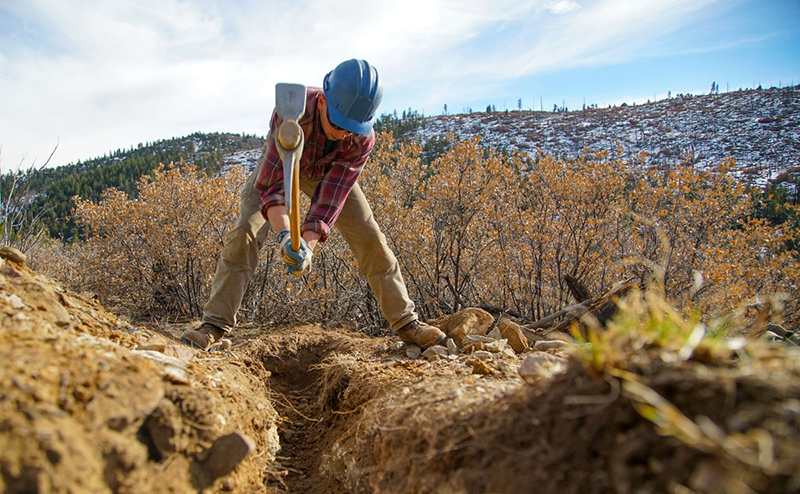
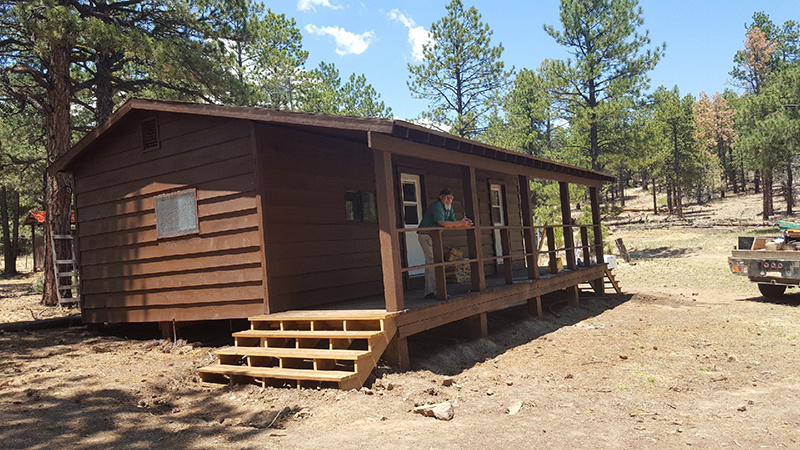
Prior to 1993, Philmont had a staff camp at Santa Claus. Through the hard work of our maintenance team, the Santa Claus staff cabin was renovated and is ready to welcome crews this summer. Santa Claus will replace Harlan as the shotgun shooting camp. Since Harlan is in the burn scar, this camp will not be used.
Structures at Dean Cow were lost in the fire. The rock-climbing program that was there will be moved to the Chase Cow Camp located on the Chase Ranch. This camp features a historic cabin, beautiful rock features, and corrals. Our maintenance and conservation staff have constructed a yurt platform and will be installing campsites and a water system. Rock climbing routes will be installed as we get closer to the start of the summer season.
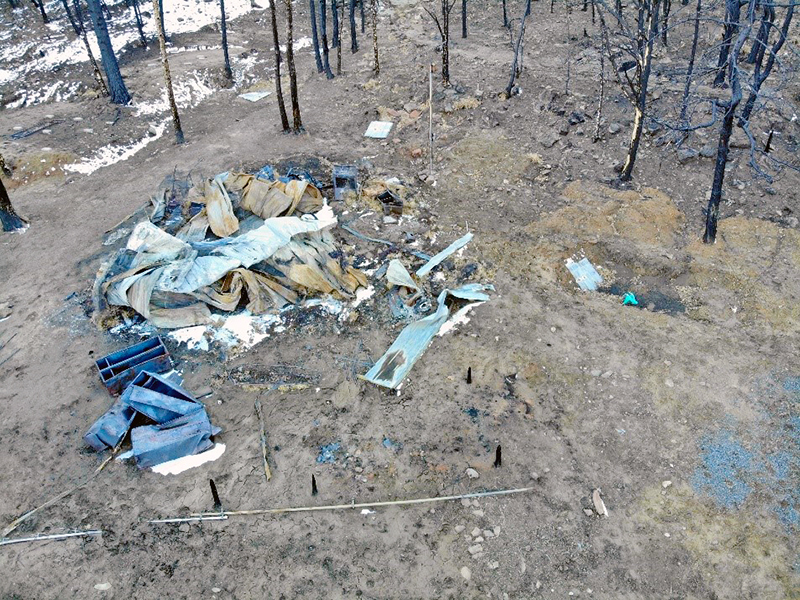
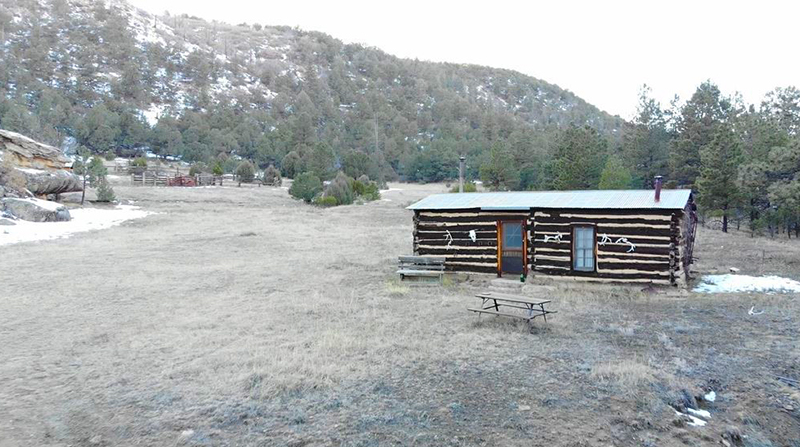
Philmont is very thankful for all our neighbors. If it wasn’t for them, Philmont crews would not enjoy some amazing hiking opportunities that connect, and enhance, portions of our treks. The Express UU Bar ranch has graciously allowed Philmont to create a new staff camp at Garcia Cow Camp. This camp is near Philmont’s southern border and will be a living history camp where staff will tell the story of Ernest Thompson Seton, the first Chief Scout of the Boy Scouts of America.
While the commissary and trading post at Ute Gulch sustained minimal damage, the land around the camp was burnt severely, and will not be safe to use this year. The commissary and trading post will be relocated to Cimarroncito.
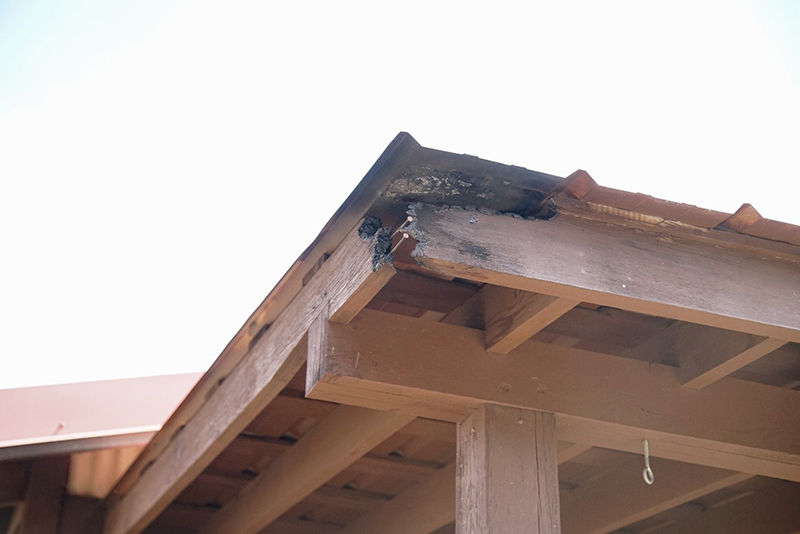
Restoration work in the burn
The Philmont Conservation Staff and members of the Ranching team are working hard on recovery efforts in the burn. They have several strategies to combat erosion. These plans include reseeding, contour felling, wattle installation, mastication, and the installation of sediment ponds. Work has been slow due to weather, but will be ongoing over the next few months and years. There are safety concerns while working in the burn area, including falling trees and mud/rock slides during rain events. Philmont has been working very closely with local, state, and federal resources to produce a plan that will ensure the long-term success of efforts in the burn. One agency that Philmont is working with is the Natural Resources Conservation Service (NRCS) which is helping Philmont administer a grant that provides 75% of the funding while Philmont matches 25%. Philmont is using donations to fund it’s $150,000 commitment, which will be matched with $450,000 in funds from an NRCS grant to provide $600,000 worth of fire restoration and recovery work.
The photos below show some of the techniques Philmont is using to help restore the burn scar.
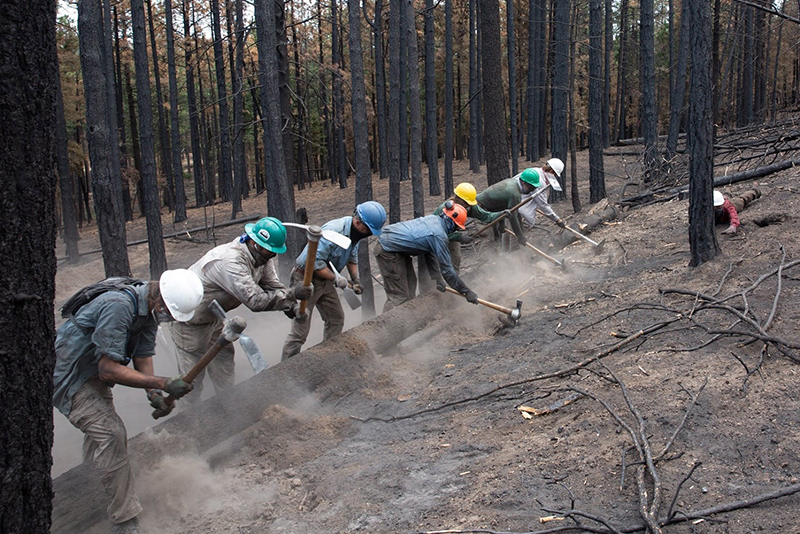
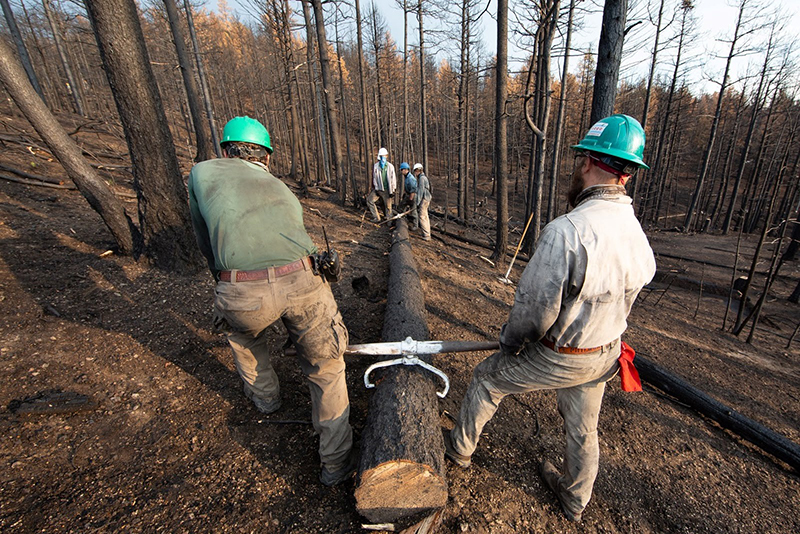
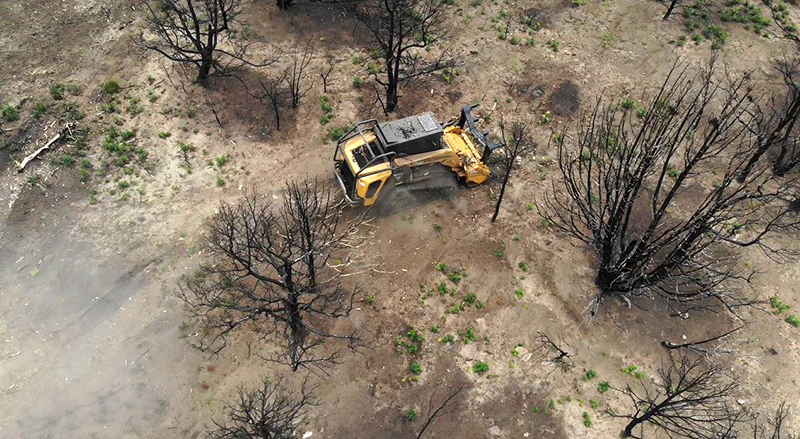
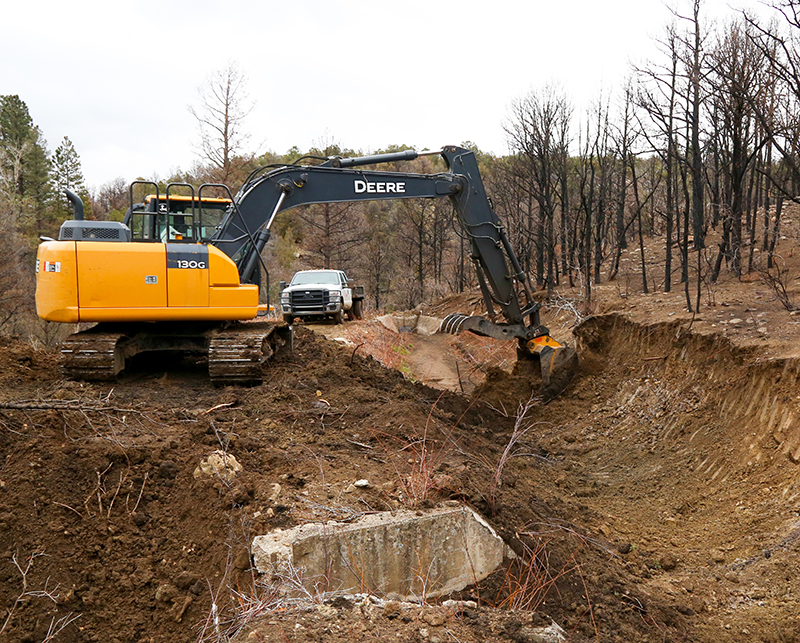
Fire Mitigation Work
The Ute Park Fire was a high severity fire. Most of it was a Crown Fire, meaning the fire spread from tree top to tree top. This type of fire behavior typically burns at a higher intensity, and usually results the loss of vegetation and can sterilize the soil. The loss of vegetation in combination with steep slopes and highly erodible soil increased the overall impacts that the fire had. Recovery from these types of fires can take decades.
Over the last 110 years, forests across the Western United States have not been allowed to burn. Human involvement in the prevention of fires and modifying the landscape, has altered the natural fire regimes. As result forests have become unnaturally dense and large amounts of fuel have been allowed to accumulate. As a result, catastrophic fires are becoming more and more common across the West. Philmont’s goal is to help restore the forest to their natural cycles and historic forest structure through forestry management. This involves reducing stand densities, removing ladder fuels, and creating openings in the forest canopy. The outcome from these forest management practices will result in restoring the form and function of our ecosystems and making them more resilient to fire, insects, and changing climate.
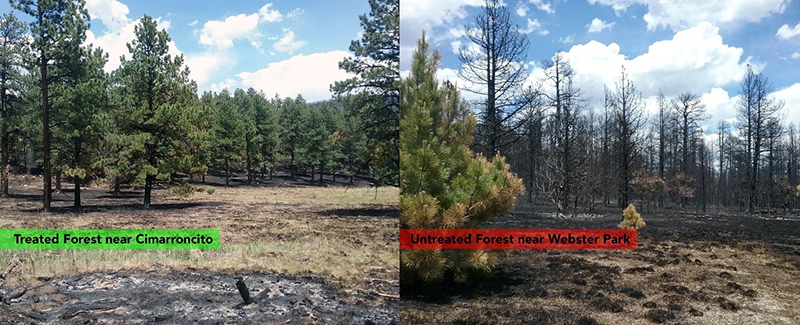
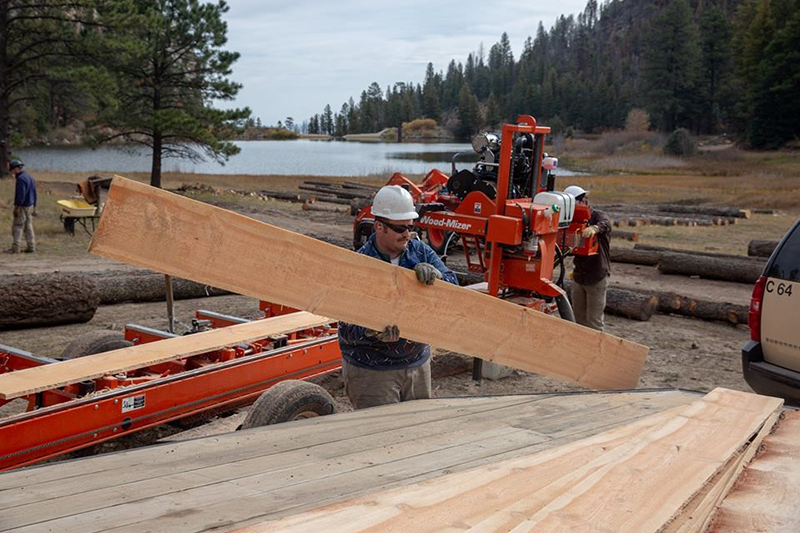
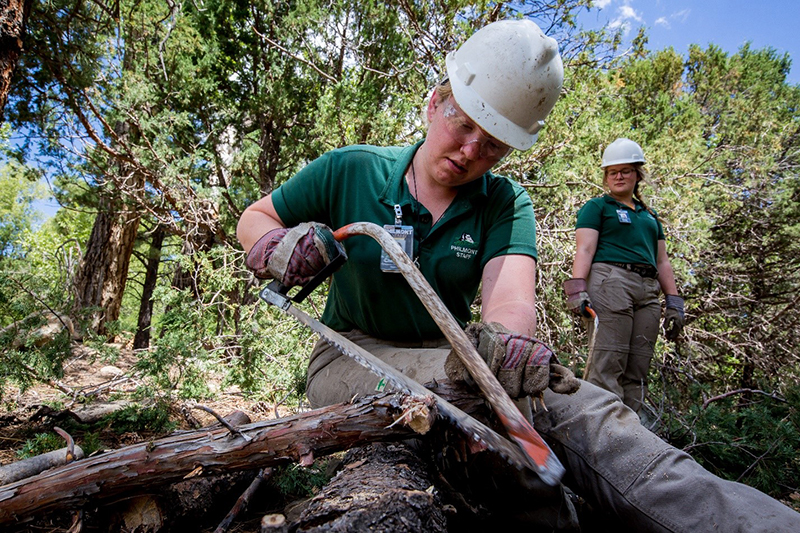
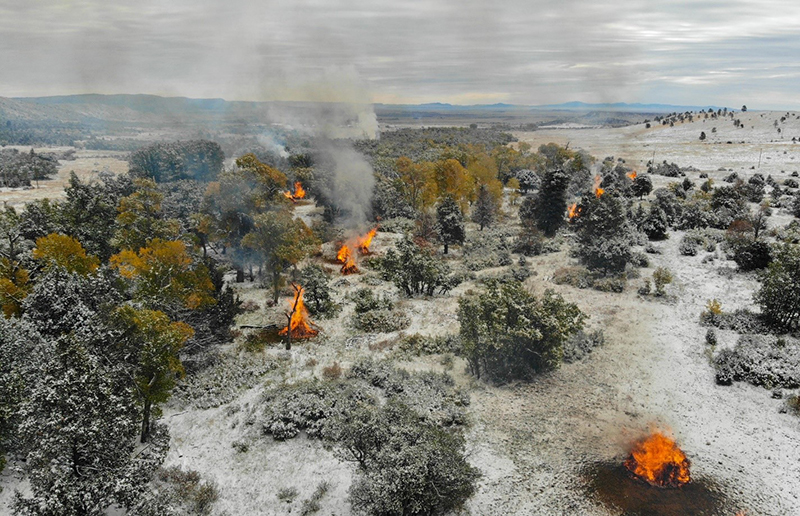

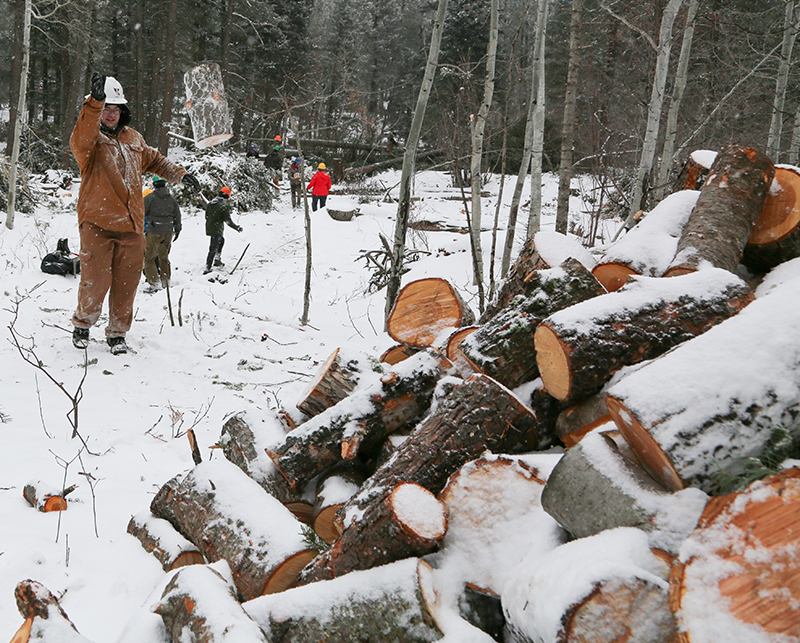
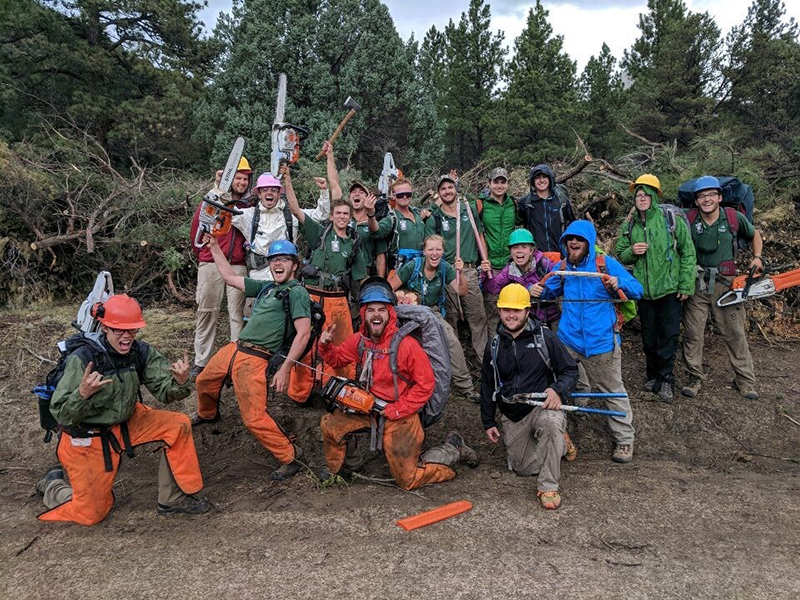
Philmont has been working hard to ensure that we are able to provide a quality program to crews coming in 2019 and beyond. There is still a lot of work to do in both the burn scar and the rest of the Ranch in order to ensure the forest can thrive and Philmont can protect the Waite Phillips Legacy. Your donations are helping us to achieve these objectives. We want to thank you for your support. We appreciate this time to educate you as we continue to be good stewards of your donations. We still have much to do and will continue to provide wilderness and learning adventures that last a lifetime. We thank you once again for your past and ongoing support.
If you would like to help Philmont continue the restoration efforts described please consider a donation to the disaster relief fund.
20 responses to “Ute Park Fire Recovery Update”
Admiring all your hard work.
As a forester, what you are doing makes sense ecologically and for the future safety of the Ranch.
I have great memories of Philmont, and you are working to make memories for all the staff and future crews that attend.
All the best!
Hard to see Dean Cow. I stayed there in 2010. Hope to see pics of Harlan some time. It was one of my favorite camps. It is good to see Santa Claus being used again. We rode out a storm on Christmas in July in 2013 on the porch of that cabin. Great work with all of the recovery.
So glad to see you do rehab on Philmont forests. The burns of the Ponil Complex fire healed so slowly.
Great work. We are still suffering the effects of the Las Conchas Fire, and this work represents a great achievement.
Glad to see restoration happening. I ask my nephew working at Philmont to let me if he saw new growth in the area. If the group photo is today’s? Wonder if Michael Ardelean is on the front row?
Marcia S Graves
Sorry my nephew wasn’t here when this article was written. So my nephew isn’t in any of photos.
Marcia
I served as manager for Philmont Logistics in 2018. May 31 and subsequent days were very challenging – nothing for which we had trained during the previous weeks. It certainly made the 2018 season unique! Happy to see the recovery efforts.
Looking good! One of my favorite trips and I’ll always give more if needed.
Wondering if “the powers that be” have considered allowing all-adult Scouter crews to go to Philmont for one-week or 10-day conservation projects with some hiking and other “downtime” activities. I have had several adult volunteers inquire.
This is a perfect example of how “Philmont is not only Property; Philmont is People!” I am very proud of even being loosely associated with such a great team! Thanks so much for the hard work and dedication!
Thrilled to see all of the hard work paying off. Way to go Philmont!
Moving the commissary to Cimmaroncito is interesting…already one of the busy camps! But at least it isn’t too far from Ute Park.
Glad to see all the recovery work. Philmont holds a special place in my memories from trek in 1982 to bring my family back to base camp for week long encampment in 2002. Our Family loves it there. Also being a firefighting family I like to see all the prevention work going into to effect. Keep up the hard work.
Glad to see you are progressing from such a devastating fire so quickly and to see fire safety improvements underway too. I was staff there in 1982 and have many fond memories.
Sad to see the cabin at Dean Cow is gone. However, glad to see all the restoration happening. Well Done!! Philmont Crews. Thank you for all your hard work and dedication so that future crews can enjoy the beauty which is Philmont.
Outstanding work! Philmont Scout Ranch is an amazing space for scouting. The volunteers, staff and donors helping in the restoration make it even more special! Salute!!
Philmont is truly God’s Country. An old Troop 483 hats off to everyone that’s helping restore Philmont so we can enjoy it again!
From an old Scouter who climbed Baldy 12 times!
I’m confused about Santa Claus as it was a dry camp in 1991 with no Cabin or anything when I worked at Head of Dean the nearest staff camp in 1991. Would love to go back for a tour and am so glad it wasn’t all lost
That s why hundreds of Scouts, Venturers and adult volunteers will gather at Philmont Scout Ranch in March and early April for Philbreak 2019, a chance to help the legendary Scouting destination recover from the Ute Park Fire.
If I were a younger man I’m sure I would jump in there with the crews to do what I can to help out. It’s been sixty years since I was at Philmont as a sixteen year old scout. I know what the wilderness adventure has meant to me and what it will mean to young fellows who will experience it in the future thanks to the dedication of the staff and volunteers who are making a difference in getting Philmont up and running at full capacity. Keep up the good work and God speed.